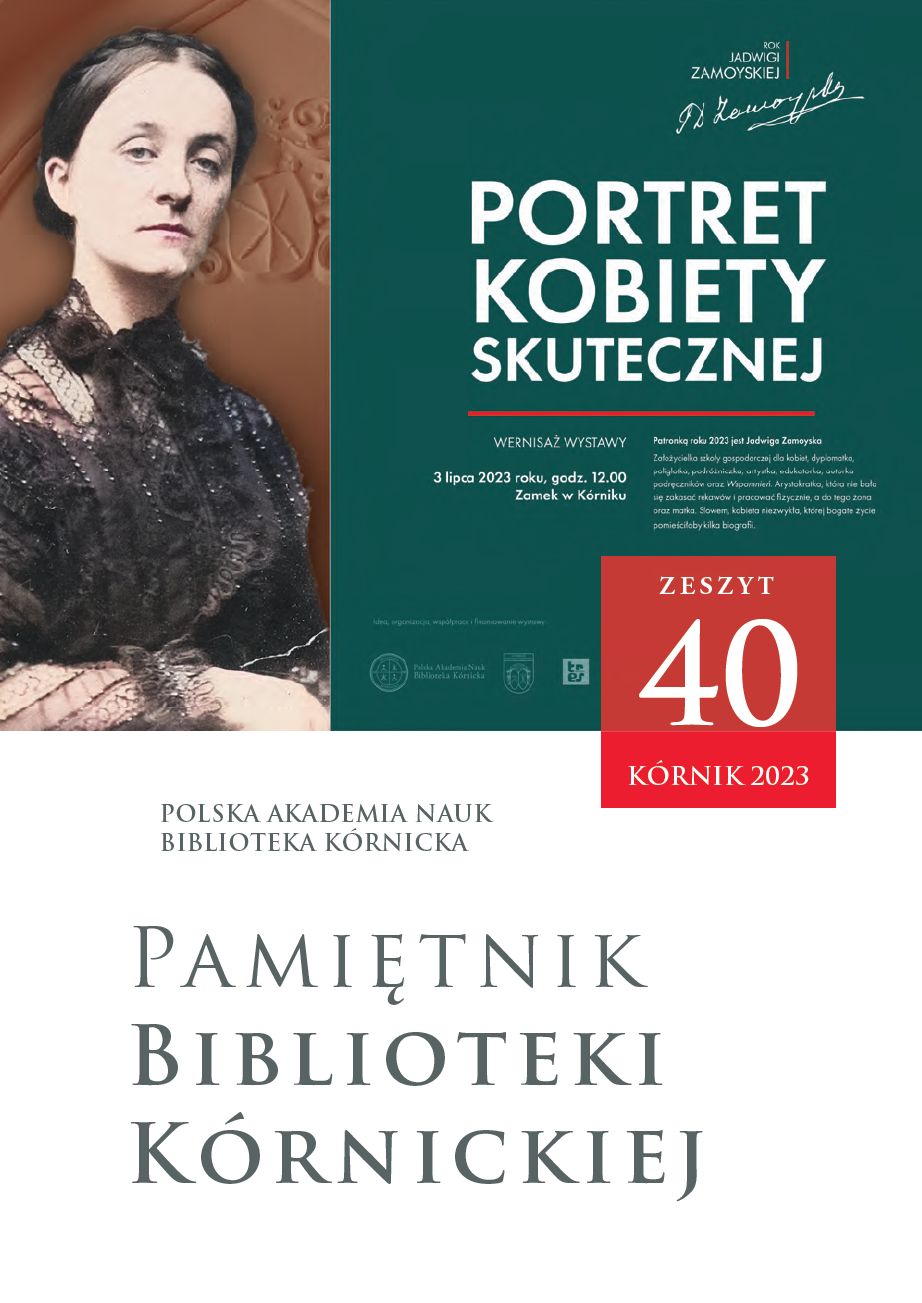O WOJCIECHA KĘTRZYŃSKIEGO EDYCJI EPITAPHIUM DITHARDI ABBATIS SŁÓW KILKA
Abstrakt
Celem artykułu jest przybliżenie problematyki związanej z edycją Epitafium opata Ditharda, dokonaną przez Wojciecha Kętrzyńskiego w 1893 r. w szóstym tomie Monumenta Poloniae Historica. Wbrew powszechnie przyjętej za sprawą tego uczonego informacji Epitafium opata Ditharda nie wchodziło w skład rękopiśmiennej kolekcji tzw. źródeł oliwskich (Fontes Olivenses). Ten wierszowany utwór pochwalny na cześć pierwszego opata klasztoru oliwskiego powstał najprawdopodobniej w XIII w., a znany jest dziś głównie z drewnianej tablicy z XVII w., znajdującej się w archikatedrze oliwskiej w Gdańsku, której Wojciech Kętrzyński nie znał z autopsji. Wydał on Epitafium opata Ditharda, biorąc za podstawę kopię tekstu zachowaną w rękopisie kórnickim sygn. BK 65, zdjętą z tego tabulatum w 1749 r. Z uwagi na fakt, że istnieje starsza kopia tekstu tego dzieła, zapisana w rękopisie gdańskim (APG, sygn. 940/422), zdjęta nie z tabulatum, a z piętnastowiecznej polichromii, edycję Kętrzyńskiego należy dziś uznać za niewystarczającą.
This paper seeks to acquaint the readers with problems related to Wojciech Kętrzyński’s 1893 edition of Epitaphium Dithardi abbatis [Epitaph of abbot Dithard] in volume six of Monumenta
Poloniae Historica. In contrast to the information the scholar disseminated which was subsequently commonly adopted, Epitaphium Dithardi abbatis was not a part of the hand-written collection of the so-called Oliva sources (Fontes Olivenses). This laudatory work in a verse form, in honour of the first abbot of the Oliva monastery, was probably created in the 13th century, and today is known mainly from the 17th-century epitaph tablet surviving in the Oliva Cathedral in Gdańsk, which Wojciech Kętrzyński did not see personally. He issued Epitaphium Dithardi abbatis taking as the basis a copy of the text surviving in the Kórnik manuscript call no. BK 65, copied from this tablet in 1749. Today, in view of the existence of an older copy of the text, included in the Gdańsk manuscript (APG, call no. 940/422) copied not from the tablet but from the 15th-century polychrome, Kętrzyński’s edition should be considered insufficient.

